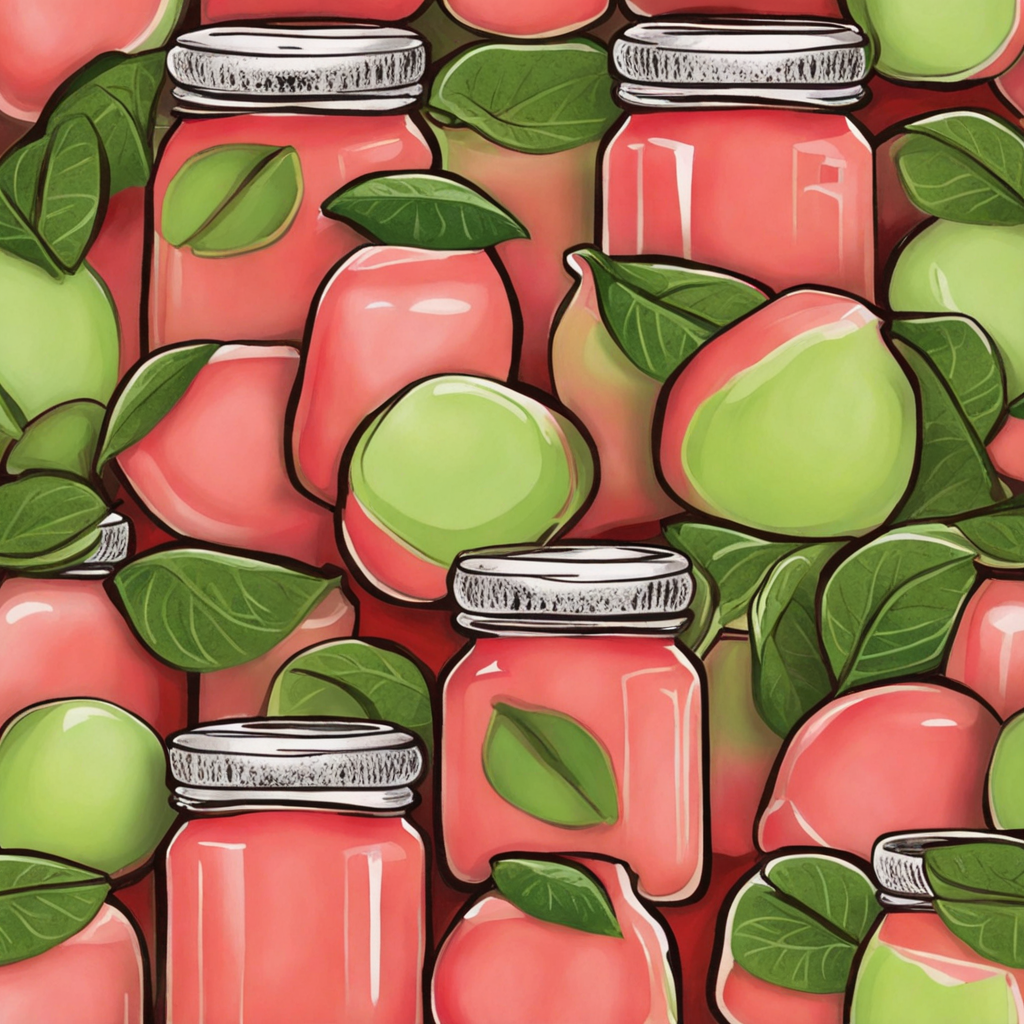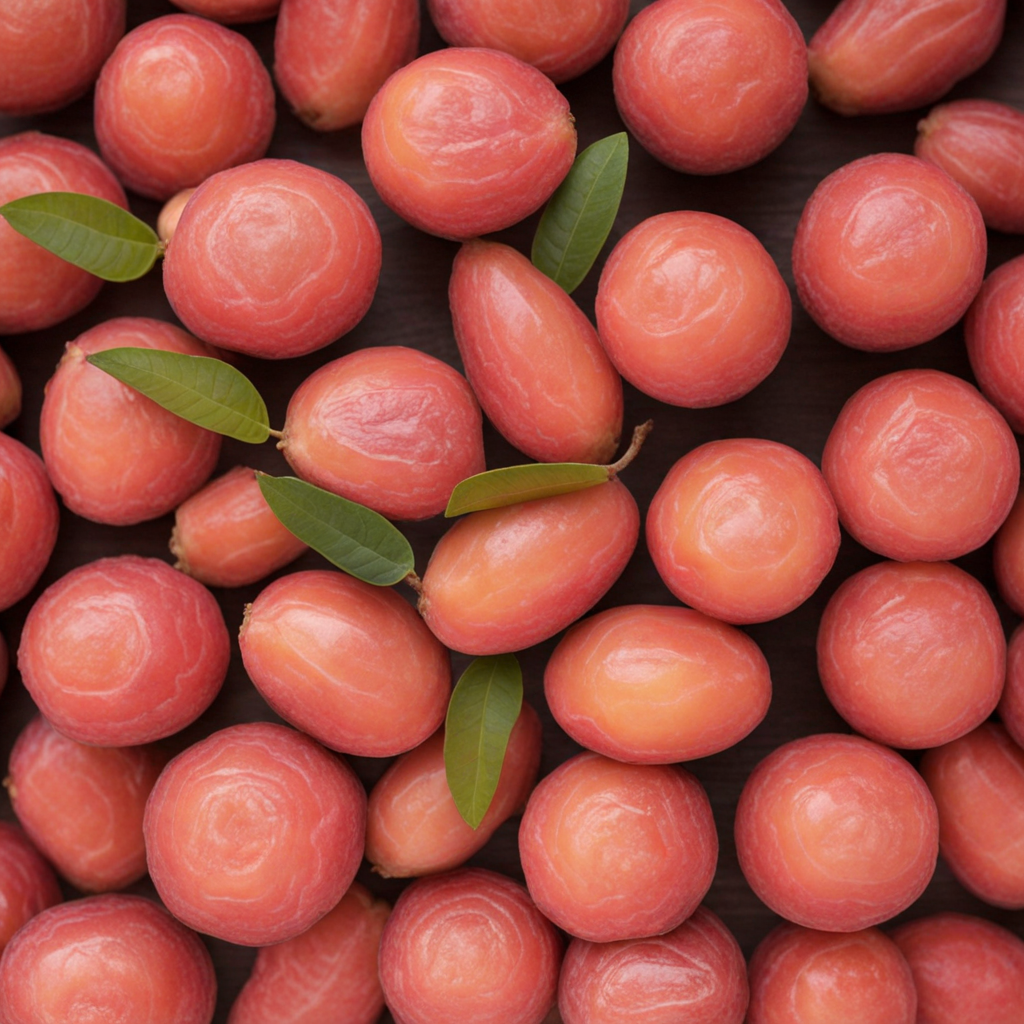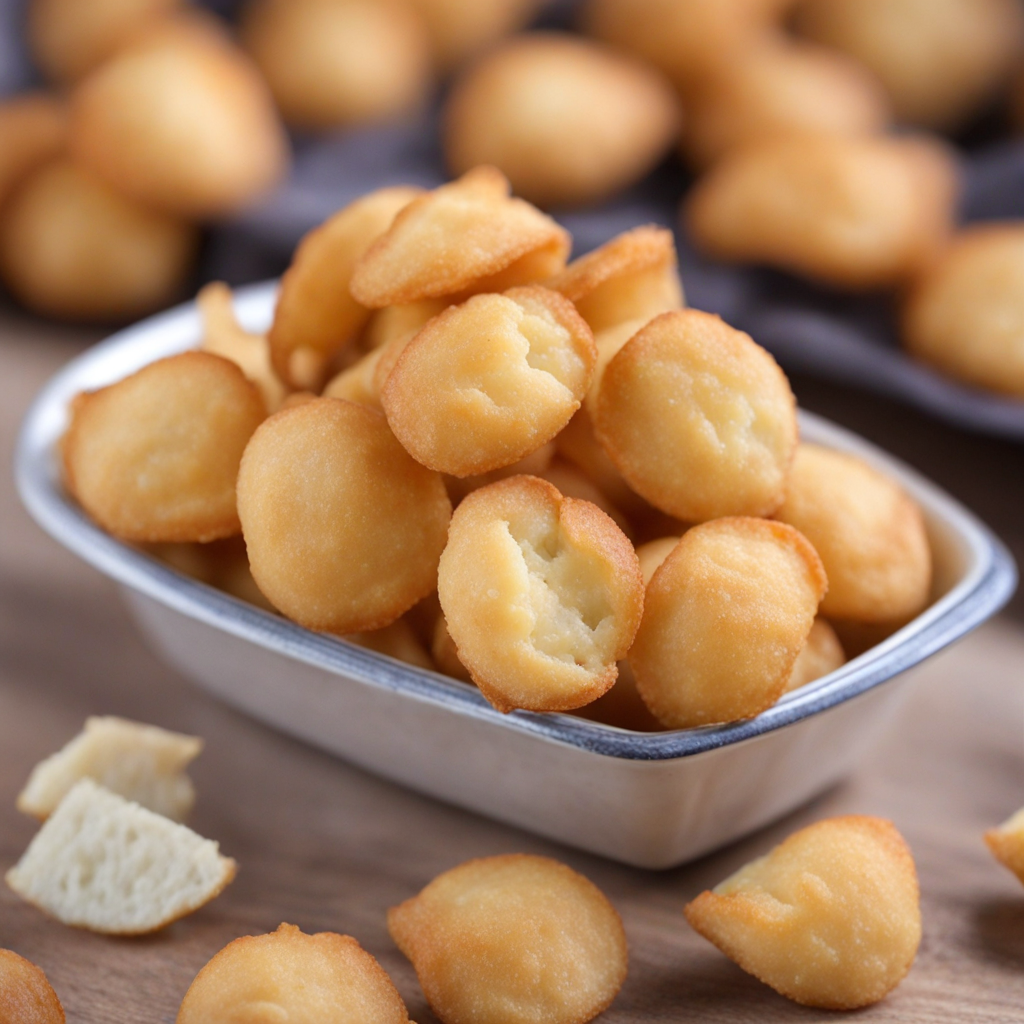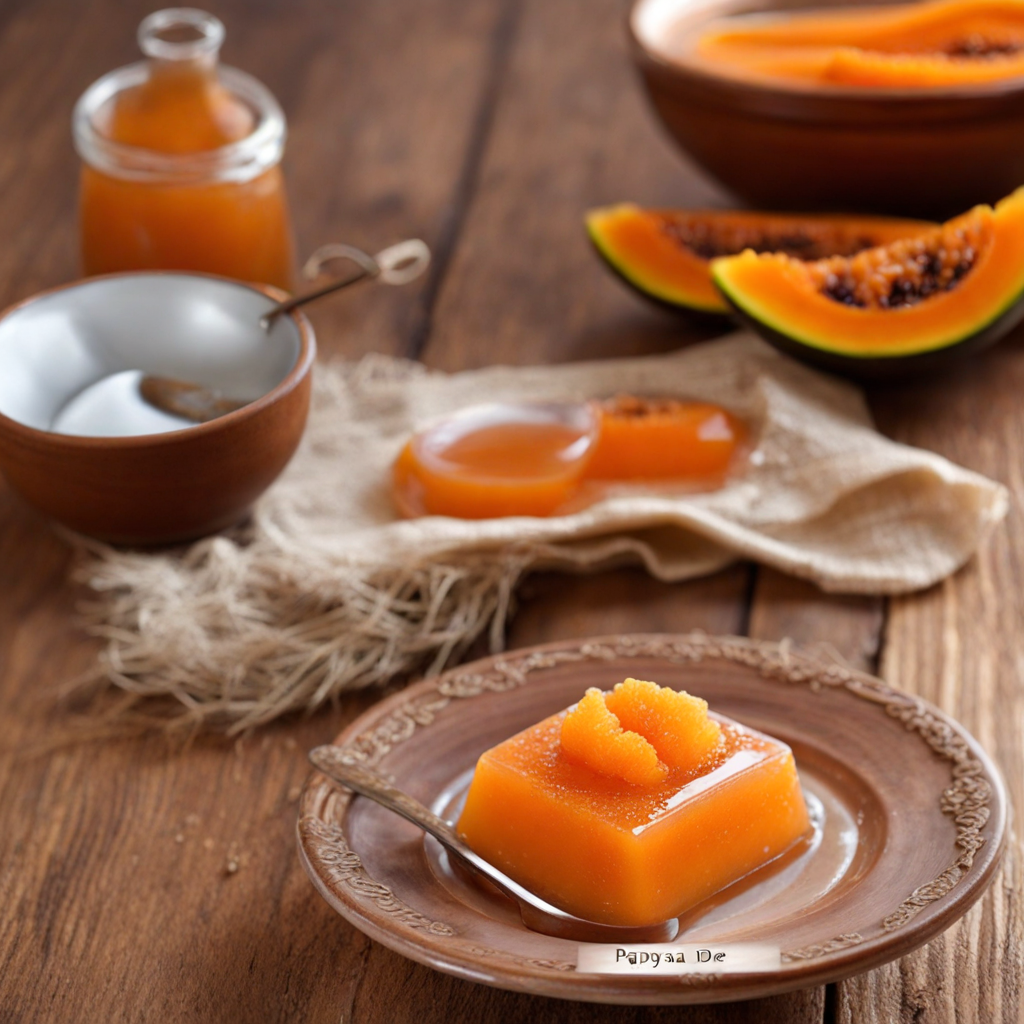Dulce de Guayaba
Dulce de Guayaba is a delightful treat that embodies the sweet essence of guava, a tropical fruit cherished in Paraguay and many other Latin American countries. This confection is often made by cooking ripe guava pulp with sugar until it reaches a thick, jam-like consistency. The result is a vibrant, ruby-red or deep pink block of guava paste, which is not only visually appealing but also packed with the fruit's natural sweetness and unique flavor profile. The fragrant aroma of the guava adds an enticing element that draws anyone in, promising a delightful taste adventure. In Paraguay, Dulce de Guayaba is typically enjoyed in various ways. It can be sliced and eaten on its own as a snack, paired with cheese for a luscious contrast between sweet and savory, or used as a filling for pastries and empanadas. The smooth texture and rich flavor make it a versatile ingredient, perfect for elevating desserts or adding a splash of tropical sweetness to breakfast dishes. The sweetness is balanced with a hint of tartness from the guava, creating a complex taste that lingers on the palate. This traditional delicacy is not only a staple in Paraguayan cuisine but also a symbol of the region's agricultural bounty. Often handmade through artisanal processes, Dulce de Guayaba captures the essence of local guava varieties, making each batch unique. Whether enjoyed during a festive gathering or as an everyday treat, this luscious guava paste offers an authentic taste of Paraguay’s culinary heritage, inviting everyone to savor the flavors of this vibrant culture.
How It Became This Dish
The Enchanting Journey of Dulce de Guayaba: A Taste of Paraguay's Heritage Dulce de Guayaba, or guava paste, is a beloved treat that encapsulates the essence of Paraguay’s culinary heritage. This sweet confection, made predominantly from the guava fruit, reflects the rich cultural tapestry of the region—its indigenous roots, colonial influences, and modern adaptations. To understand the significance of Dulce de Guayaba, we must explore its origins, cultural significance, and how it has evolved over time. #### The Origins: Guava and Its Cultural Roots The guava fruit (Psidium guajava) is native to tropical America, with its origins traced back to the ancient rainforests of Central and South America. It was a staple for indigenous tribes long before the arrival of Europeans. These communities revered the guava not only for its sweet taste but also for its nutritional value. Guava was often consumed fresh, dried, or in various forms, including juices and jams. In Paraguay, the indigenous Guaraní people were among the first to cultivate and utilize this fruit. They recognized the guava’s resilience and adaptability to the subtropical climate, making it a reliable source of sustenance. The Guaraní used guava in various traditional dishes, incorporating it into their daily diet and rituals. When the Spanish colonizers arrived in the 16th century, they encountered the guava and quickly adopted it into their own culinary practices. The fusion of indigenous and Spanish influences gave rise to new ways of preparing and preserving guava, leading to the creation of Dulce de Guayaba. #### The Craft of Making Dulce de Guayaba The traditional method of preparing Dulce de Guayaba involves cooking ripe guavas with sugar until a thick, jam-like consistency is achieved. The process begins with selecting the best quality guavas, which are then peeled and pulped. The pulp is cooked slowly with sugar, sometimes with the addition of lemon juice or spices to enhance the flavor. This careful cooking process not only intensifies the sweetness but also preserves the fruit’s natural aroma and color. Once cooked, the mixture is poured into molds and allowed to cool and set, creating a firm yet spreadable paste. Dulce de Guayaba is often enjoyed on its own or as an accompaniment to various dishes. It pairs beautifully with cheese, particularly the creamy, mild varieties, making it a popular choice for cheese platters. It is also used in pastries, cakes, and traditional sweets, celebrating the versatility of this delightful treat. #### Cultural Significance: A Sweet Symbol of Paraguay Dulce de Guayaba is more than just a dessert; it is a symbol of Paraguayan identity and culture. The guava fruit and its transformative process into dulce represent the blending of indigenous and colonial traditions, showcasing the adaptability of Paraguayan cuisine. This sweet treat is commonly found at family gatherings, celebrations, and national festivities, where it is shared among loved ones as a gesture of hospitality and warmth. In Paraguay, the guava tree is often referred to as "el árbol de la vida" (the tree of life) due to its ability to thrive in various conditions and its bounty of fruit. This connection to the land and the natural resources is deeply ingrained in Paraguayan culture, making Dulce de Guayaba a representation of sustenance, resilience, and community. It evokes memories of childhood for many Paraguayans, as families pass down the art of making dulce from generation to generation, reinforcing familial bonds and cultural continuity. #### Evolution Over Time: From Tradition to Modernity As the world has become more interconnected, so too has the appreciation for traditional foods like Dulce de Guayaba. In the 20th century, as Paraguay began to modernize, the production of Dulce de Guayaba saw changes in both scale and technique. While many families continued to make dulce in their kitchens, commercial production began to flourish, with local businesses and cooperatives emerging. This shift allowed for greater accessibility to this beloved treat, enabling it to reach a wider audience both within Paraguay and abroad. With globalization, Dulce de Guayaba has transcended its regional confines, finding a place in international cuisine. It has become a popular ingredient in gourmet foods, often featured in upscale restaurants and artisanal markets. Chefs are experimenting with this traditional ingredient, incorporating it into innovative dishes that celebrate its unique flavor profile. From gourmet desserts to savory pairings, Dulce de Guayaba has adapted to contemporary palates while retaining its cultural roots. Despite these modern adaptations, the traditional preparation methods remain cherished. Many artisanal producers emphasize the importance of using locally sourced guavas and traditional techniques to create high-quality dulce. This commitment to authenticity not only honors Paraguay’s culinary heritage but also supports local farmers and communities. #### Conclusion: A Sweet Legacy Dulce de Guayaba is more than just a sweet treat; it is a testament to Paraguay’s rich cultural history and the enduring bonds of community. From its origins in indigenous traditions to its place on modern culinary stages, this delightful confection tells a story of resilience, adaptation, and celebration. As Paraguay continues to carve out its identity in the global culinary landscape, Dulce de Guayaba stands as a sweet reminder of the country’s vibrant heritage—a legacy that will undoubtedly continue to be cherished and shared for generations to come. In every bite of Dulce de Guayaba, one can taste the history and culture of Paraguay, making it not just a food item, but a symbol of the heart and soul of a nation.
You may like
Discover local flavors from Paraguay







